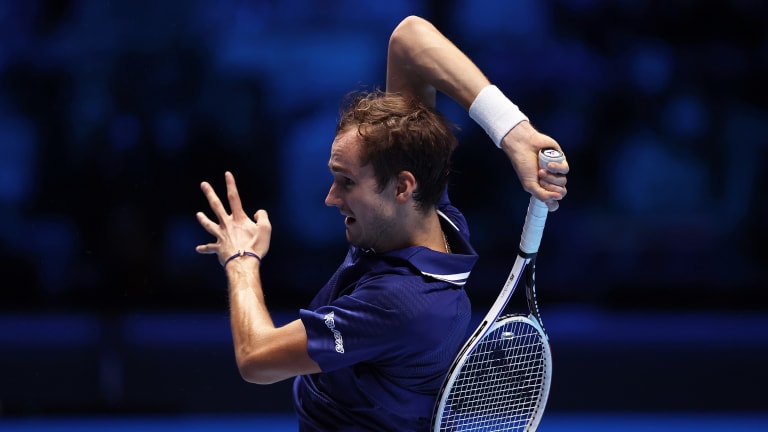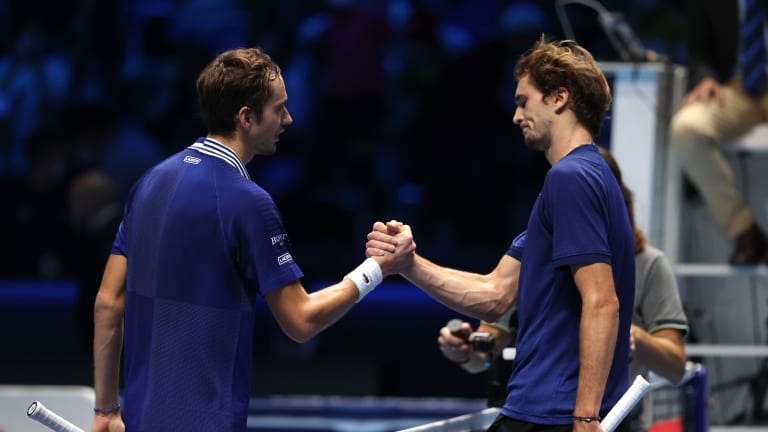ATP Finals
Reigning ATP Finals champion Daniil Medvedev has just enough answers to squeak past Alexander Zverev
By Nov 16, 2021ATP Finals
Jannik Sinner, Carlos Alcaraz headline Nastase, Newcombe groups at 2024 ATP Finals
By Nov 07, 2024ATP Finals
Novak Djokovic withdraws from ATP Finals
By Nov 05, 2024ATP Finals
Wanted: Faster Courts
By Nov 20, 2023ATP Finals
Improving Jannik Sinner has his sights set on serving up more success next season
By Nov 20, 2023ATP Finals
New Era, Same Emperor: Novak Djokovic reigns supreme in Turin
By Nov 19, 2023ATP Finals
Record-breakovic! Novak Djokovic defeats Jannik Sinner for historic seventh ATP Finals title
By Nov 19, 2023ATP Finals
Novak Djokovic vs. Jannik Sinner: 2023 ATP Finals Championship preview
By Nov 19, 2023ATP Finals
Novak Djokovic shows Nick Kyrgios the commentator why he's the "best player to ever touch a racquet"
By Nov 18, 2023ATP Finals
Djokovic dispatches Alcaraz at ATP Finals to set up title match against home favorite Sinner
By Nov 18, 2023ATP Finals
Reigning ATP Finals champion Daniil Medvedev has just enough answers to squeak past Alexander Zverev
The world No. 2 prevailed, 6-3, 6-7 (3), 7-6 (6), on Tuesday to take control of the Red Group in Turin and notch a fifth consecutive win over the German.
Published Nov 16, 2021
Advertising
Advertising

Make it seven consecutive ATP Finals victories for Medvedev.
© Getty Images
Advertising

After falling behind 0-4 to start their series, Medvedev has won six of seven matches against Zverev.
© Getty Images